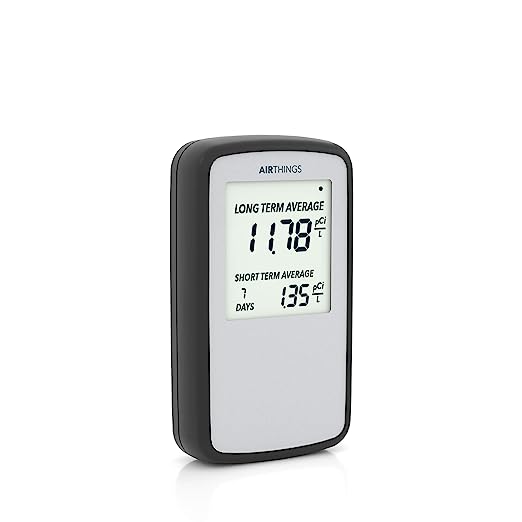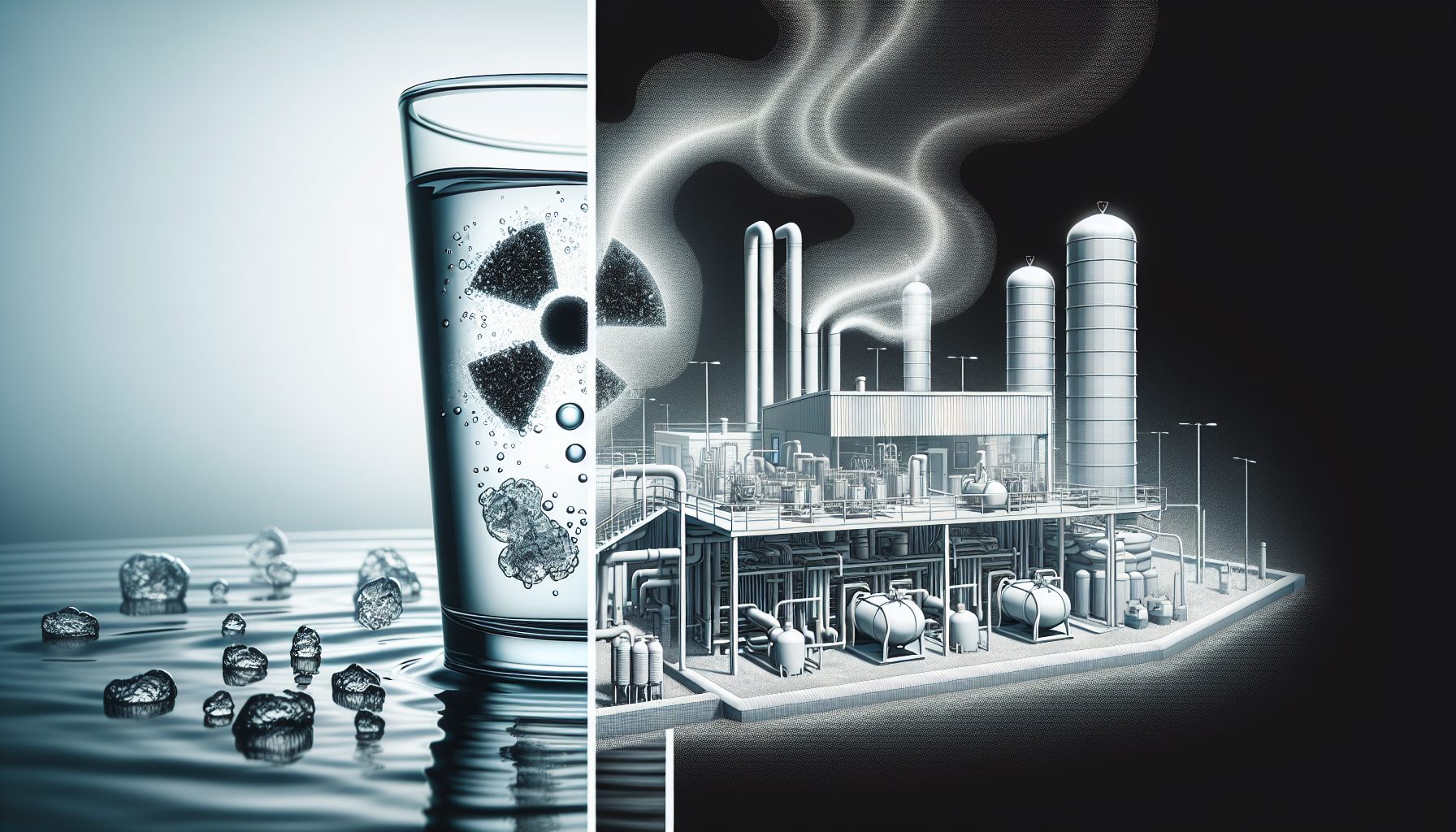Radon is an invisible, radioactive gas that may be building up in your home. This article answers the question, ‘what is radon,’ outlining its origins, health risks, and how to manage its presence effectively. Discover the importance of radon awareness for your indoor environment and learn proactive steps for ensuring your home is safe.
Key Takeaways
Radon is an odorless, tasteless, and invisible radioactive gas that can seep into homes, increasing the risk of lung cancer, particularly among non-smokers, and is responsible for approximately 21,000 lung cancer deaths annually in the U.S.
Testing for radon in homes is essential due to its invisible nature, with DIY kits and professional testing services available, and the EPA suggests mitigation actions at or above radon levels of 2 pCi/L.
Mitigating radon exposure involves preventative construction techniques, retrofitting reduction systems like soil depressurization and sealing gaps, and treating radon in drinking water with methods such as aeration and GAC to protect public health.
Table of Contents
Unveiling Radon: The Invisible Threat

We delve into the realm of radon, an odorless, tasteless, and invisible gas, a byproduct of the natural decay of uranium entrenched in our earth’s crust. This naturally occurring radioactive gas seeps into our homes, infiltrating through cracks in floors, gaps around pipes, and even the small pores in your walls. Without specific testing devices, detecting this clandestine intruder is near impossible.
Radioactive Decay of Uranium
The road to radon starts with uranium, an element that undergoes a series of radioactive decay. This volatile process of losing energy by radiation leads to the creation of various radioactive progeny, including several isotopes of radium. It’s this radium that further decays, giving birth to the radon gas we are concerned about.
This complex chain of decay culminates in radon, the final gaseous form, leaving its traces in our natural environment.
Radon Occurrence in Nature
Radon is not limited to the air we inhale. It can find its way into groundwater sources like springs, wells, and boreholes, concentrating especially in areas rich in uranium. These common water sources, often used for drinking, can contain higher concentrations of radon, posing another potential pathway for radon to enter our homes and impact our health. This is how radon occurs in our environment and becomes a concern for our well-being.
Health Implications of Radon Exposure

Radon’s invisibility does not diminish its danger. Prolonged exposure to radon can lead to serious health implications. It’s the leading cause of lung cancer among non-smokers and the second leading cause overall.
A seemingly harmless crack in your basement floor could be subtly escalating your risk of lung cancer due to prolonged radon exposure.
Lung Cancer Statistics
Radon, impartial in its harm, contributes to an estimated 21,000 lung cancer deaths annually in the United States alone. It’s estimated to cause between 3% to 14% of all lung cancers, a significant impact for a threat that’s often overlooked.
The risk of lung cancer due to long-term exposure to radon isn’t linear. In fact, for every 100 Bq/m3 increase in radon concentration, there is an increased risk of 16% in developing lung cancer.
Synergistic Effects with Smoking
If you’re a smoker, the risk escalates dramatically. The combined effects of radon and smoking amplify the risk of lung cancer significantly. A smoker exposed to a radon level of 1.3 pCi/L has a 20 in 1,000 chance of dying from lung cancer, compared to a much lower risk for non-smokers.
The harsh reality is that your smoking habit, combined with radon exposure, can be a lethal combination.
Detecting Radon in Your Home
Considering radon’s elusive nature, performing tests to detect its presence in your home is crucial. The Environmental Protection Agency (EPA) recommends considering radon mitigation if indoor levels reach or exceed 4 pCi/L, and even when levels are between 2 pCi/L and 4 pCi/L. But how do we test for an invisible, odorless, and tasteless gas?
DIY Test Kits
Fortunately, you don’t need sophisticated equipment or expert knowledge to detect radon. DIY radon test kits are available at most hardware and home improvement stores, priced around $20, making them accessible to the general public. These kits are designed for short-term radon testing, with exposure periods ranging from 2 to 7 days to capture radon levels in indoor environments.
In some cases, free radon test kits are available.
Consumer Continuous Monitors
Digital radon monitors are highly beneficial because they test a property over a long period of time. These monitors account for seasonal fluctuations and give near-immediate results.

Professional Testing Services
Professional radon testing services are an excellent choice for those prioritizing accuracy and reassurance. Certified professionals perform radon testing using advanced techniques and calibrated equipment, ensuring accurate results.
Though they can cost between $150 to $250, the reliability of the results and the potential health risk make the investment worthwhile.
Mitigating Radon Exposure in Buildings

Combating radon extends beyond mere detection. There are various measures to reduce radon levels in buildings, from preventing radon entry during construction to implementing corrective actions in existing structures.
Frequent ventilation has also been recognized as a method for reducing radon levels within indoor workplaces and existing buildings, making it an effective approach to address radon in indoor environments.
Preventative Measures
Radon-resistant construction techniques serve as a strong defense in our fight against radon. These techniques involve a combination of regular building practices and specific additional measures such as a PVC ventilation pipe, gas-tight polyethylene sheeting, and a layer of clean gravel underneath the foundation slab, all of which are essential building materials.
Remediation Strategies
For existing homes, retrofitting radon reduction systems can effectively decrease radon levels. Some common methods include:
Soil depressurization systems: These systems extract radon-rich air from beneath the building and vent it outside.
Sealing cracks and gaps: This helps prevent radon from entering the home.
Installing ventilation systems: These systems help circulate fresh air and reduce radon levels.
Regular maintenance of these systems is critical to ensure their effectiveness and prevent additional water contamination issues.
Radon in Drinking Water: A Lesser-Known Risk

Although much attention on radon is centered around its presence in the air, we must also acknowledge its potential to infiltrate our drinking water, representing a less recognized risk. The health risk posed by radon in drinking water is lower compared to when radon is present in the air, but it can still lead to the development of internal organ cancers, most notably stomach cancer.
Water Treatment Facilities
Fortunately, water treatment facilities possess the necessary equipment to manage radon in water. They employ methods like aeration and granular activated carbon (GAC) to reduce radon levels. Aeration, recognized by the EPA as the best technology for radon removal from water, can achieve efficiency rates up to 99.9%.
Home Water Treatment Options
For homeowners, there are options to treat water at home. Aeration treatment can be employed, using air bubbling to separate radon from water, combined with exhaust venting to safely release the radon gas outside.
Point-of-entry devices are advantageous as they treat all the water entering a home, as opposed to point-of-use devices which only treat water at one point, such as a faucet.
The Role of Government and Environmental Agencies
Government and environmental agencies hold a crucial responsibility in setting regulations and providing guidelines for radon testing and mitigation. The EPA recommends taking action to reduce radon levels in homes when radon concentrations reach or exceed 2 pCi/L. The Indoor Radon Abatement Act of 1988 aims to make indoor air as radon-free as ambient outside air, providing funding for radon prevention and mitigation efforts, including addressing radon in indoor air.
National Policies and Regulations
Many national building codes incorporate measures to forestall radon accumulation in newly constructed homes. Implementing radon prevention strategies during the new construction of buildings is often more cost-effective than other public health interventions. EPA guidelines are established based on risk assessment and the technical feasibility of controlling radon.
International Standards
On the global stage, organizations like the World Health Organization (WHO) advocate for the implementation of international radon standards to protect public health globally. The WHO guidelines recommend establishing screening levels for radon in drinking water which align with the national reference level for radon in air. This helps ensure adequate protection against radon exposure in both water and air.
Summary
Understanding, detecting, and mitigating radon in our homes is an essential part of ensuring our health and safety. Whether it’s testing for radon using DIY kits or professional services, implementing radon-resistant construction techniques, or being aware of radon in our drinking water, being proactive can make all the difference. Let’s breathe easy, knowing we’ve done our part to protect ourselves and our loved ones from this invisible threat.
Frequently Asked Questions
What is radon and how does it form?
Radon is a radioactive gas formed from the natural decay of uranium found in rocks and soil. It originates from the breakdown of naturally occurring radioactive isotopes buried deep underground. This process results in the release of radon gas into the air.
What are the health risks of radon exposure?
Prolonged exposure to radon is the leading cause of lung cancer among non-smokers and the second leading cause overall. It also poses a risk for other internal organ cancers, especially when present in drinking water. Take necessary steps to test and mitigate radon levels to protect your health.
How can I detect radon in my home?
To detect radon in your home, you can use inexpensive detectors or DIY kits from hardware stores, or opt for professional radon testing services for more accurate results.
How can I reduce radon levels in my home?
To reduce radon levels in your home, consider implementing radon-resistant construction techniques or retrofitting existing structures with radon reduction systems like soil depressurization systems. Regular ventilation can also help lower radon levels.
What role do government and environmental agencies play in radon mitigation?
Government and environmental agencies provide guidelines, recommendations, and implement policies to protect public health by regulating radon testing and mitigation. This ensures the safety and well-being of the population.
